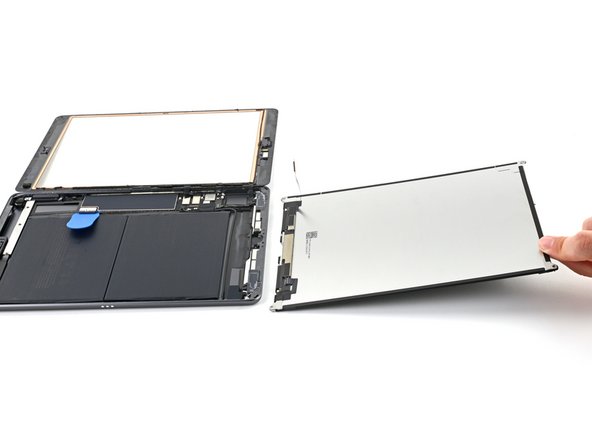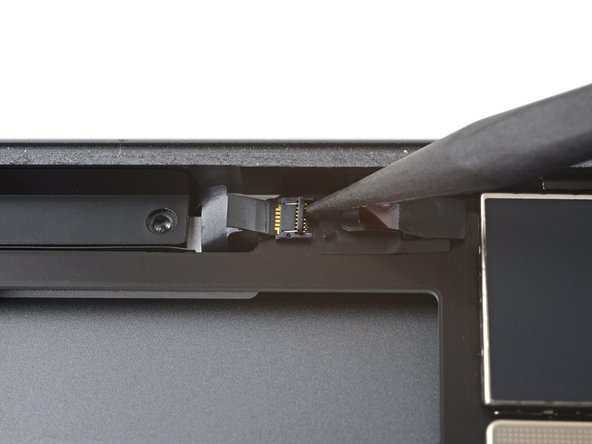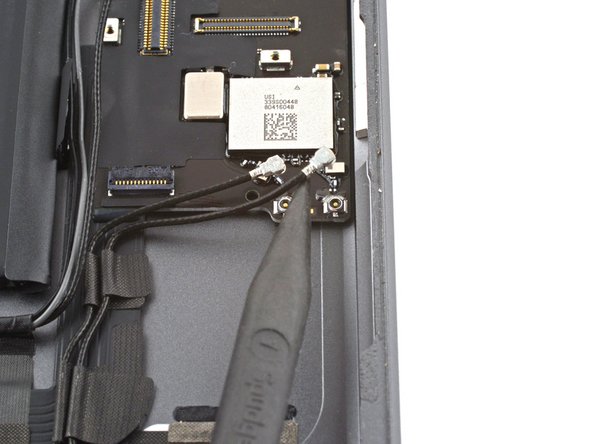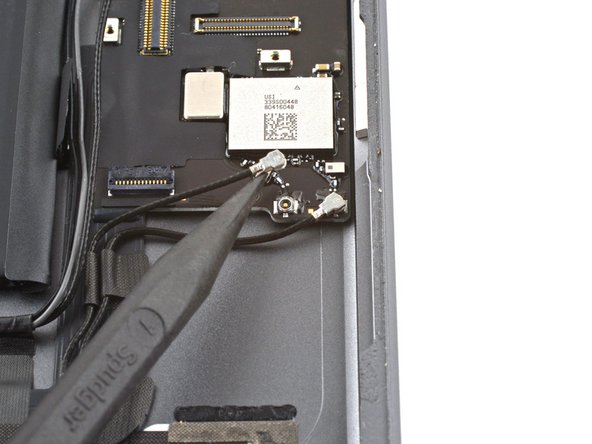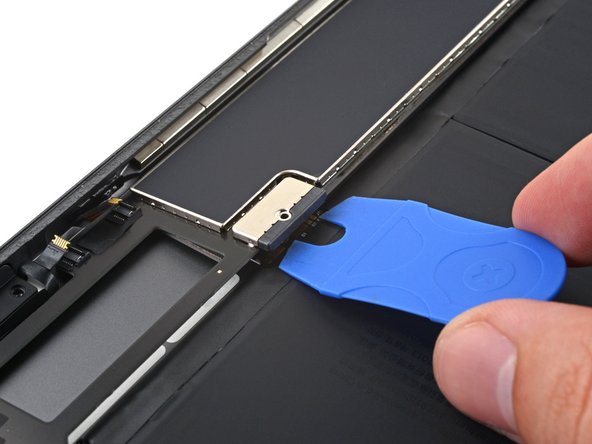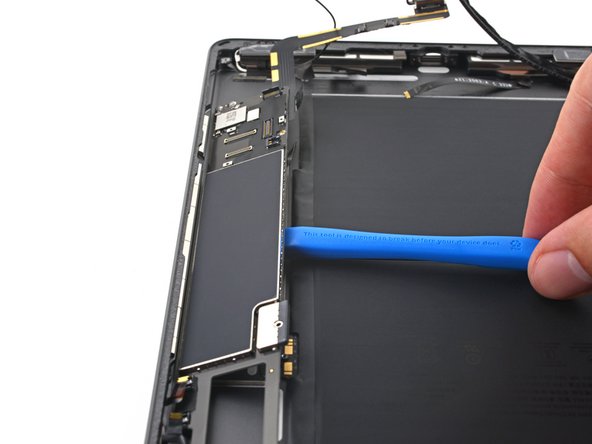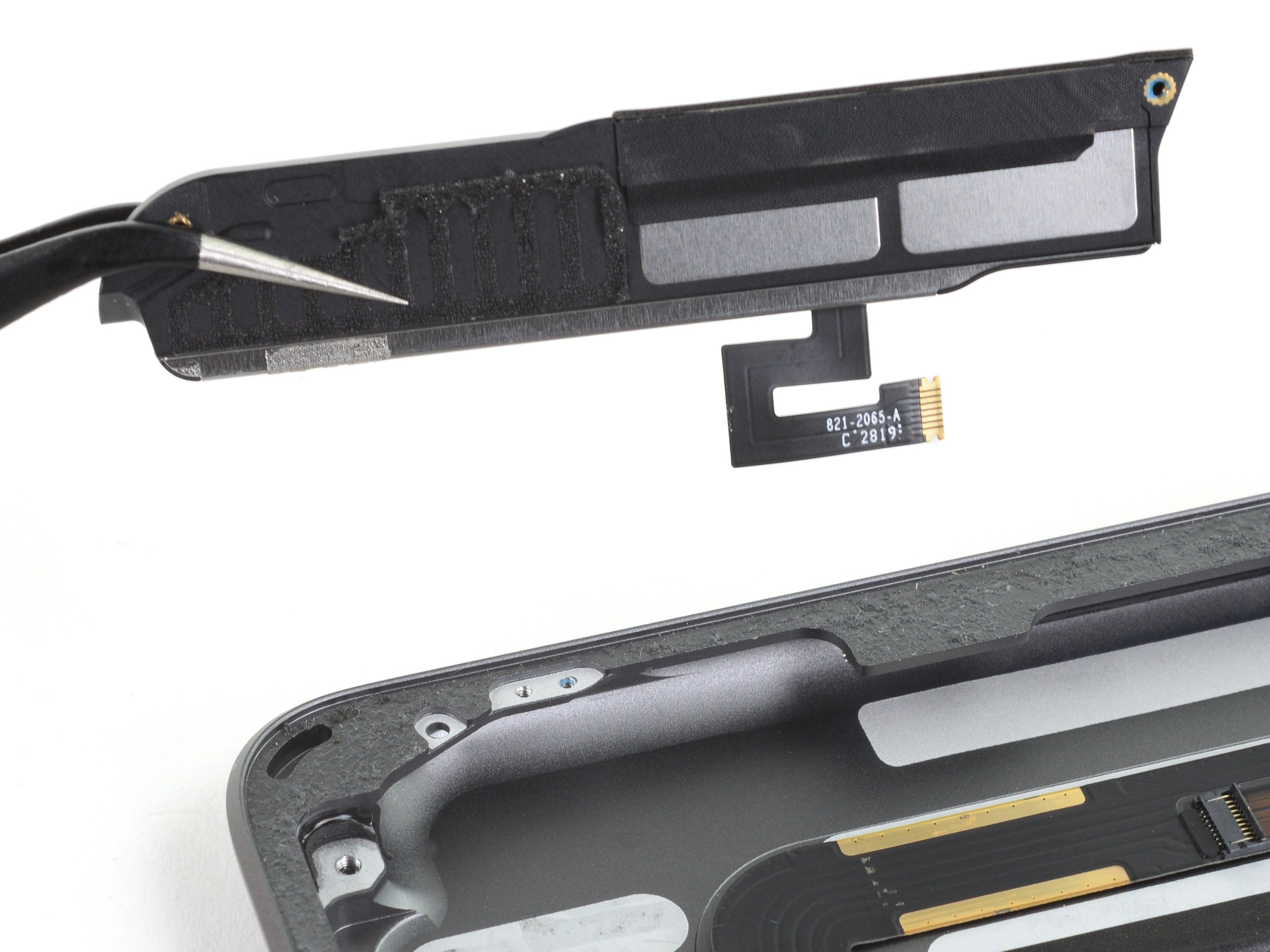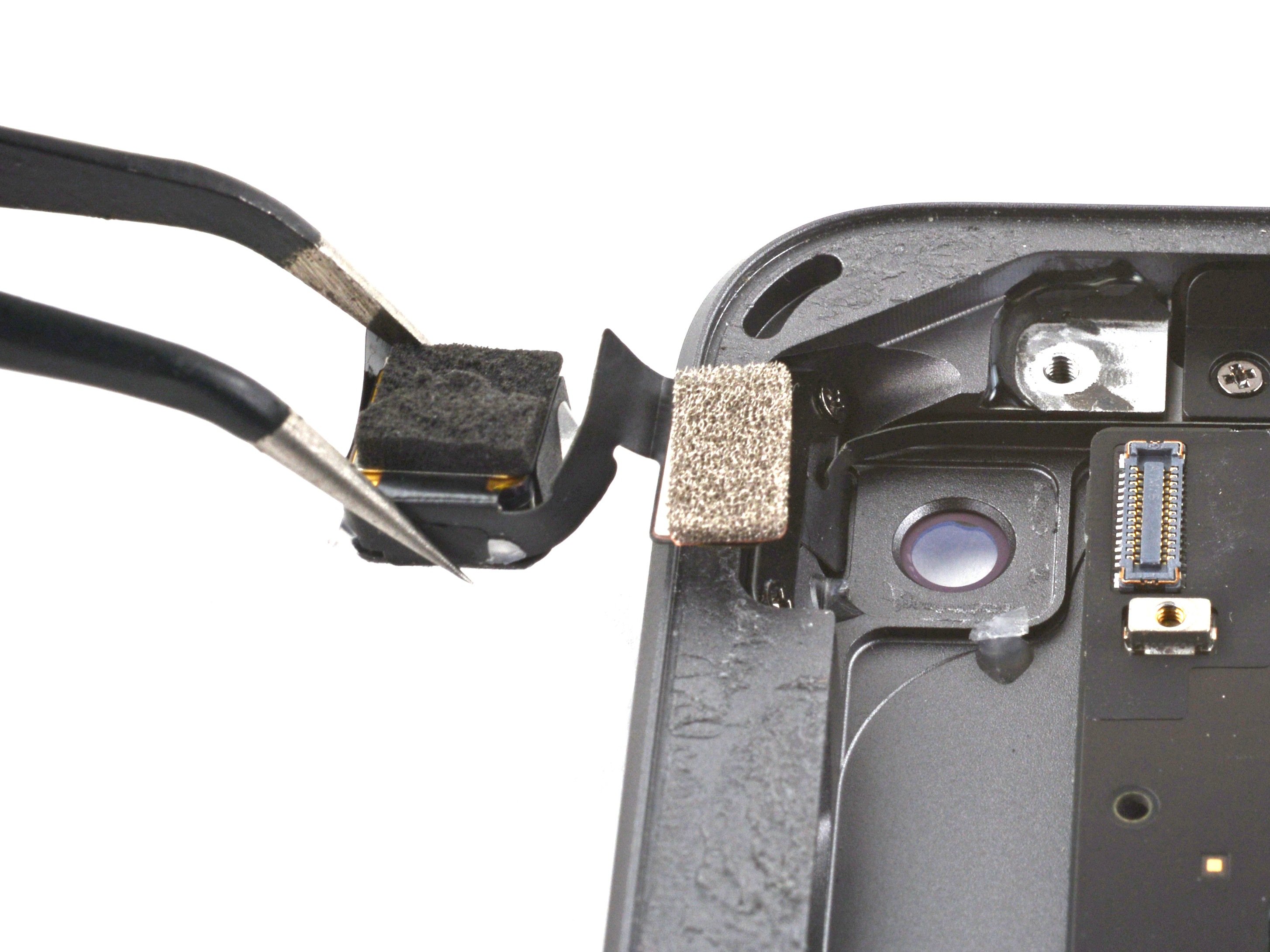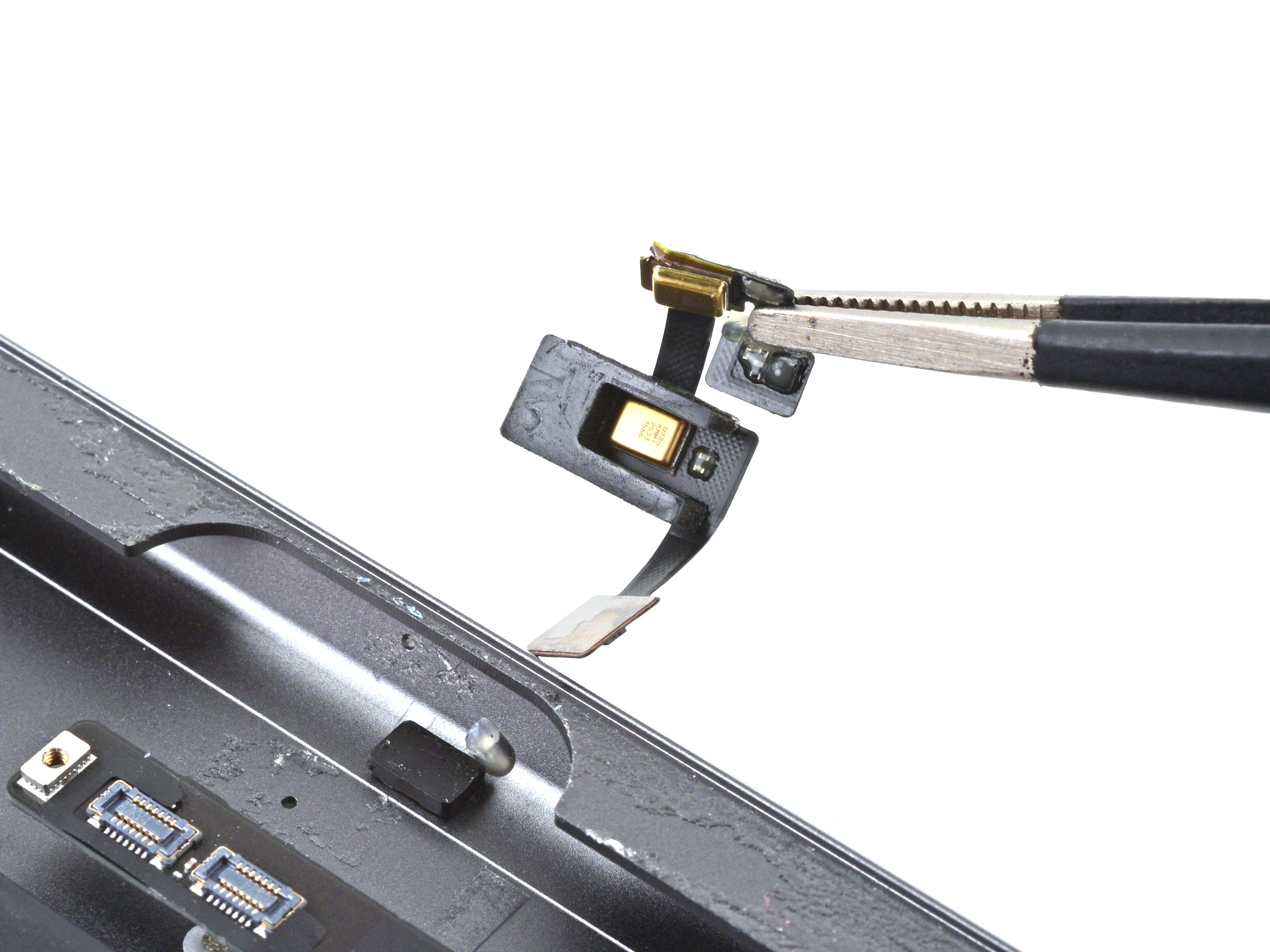iPad 8 Logic Board Replacement
Duration: 45 minutes
Steps: 79 Steps
Hey there! Just a friendly reminder to let that battery dip below 25% before diving into your iPad disassembly. Safety first, and your future self will thank you!
Get ready to tackle the logic board swap in your iPad 8 Wi-Fi! Just a heads up, this guide is specifically for the Wi-Fi version—if you’ve got the LTE version, you’ll want to check out a different guide. Before diving in, make sure your battery is below 25% to keep things safe and sound. This helps prevent any fiery surprises if the battery gets a little too adventurous during the repair. If you notice your battery is swollen, handle with care! When you’re isolating the battery with a blocker, be gentle—those battery contacts are delicate and can get easily damaged. If you decide to skip isolating the battery, stick to non-metal tools unless you absolutely need them (like for screw removal) to avoid any short circuits or damage to your precious components. A few photos here might show a different model, but don’t fret—those little visual differences won’t mess with your repair journey. Happy fixing!
Step 1
- Warm up that iOpener and give it a cozy two-minute hangout on the left edge of your device.
Tools Used
Step 2
- While the adhesive is doing its thing and loosening up, keep an eye out for these tricky spots that really don’t like being poked:
- Front camera
- Antennas
- Display cables
Step 3
Next up, we’re diving into the magic of the Anti-Clamp! It's our nifty little gadget designed to make opening your device a breeze. If you’re not using the Anti-Clamp, no worries! Just skip ahead three steps for a different approach.
Curious about how to wield the Anti-Clamp like a pro? Check out this guide for all the details!
If your iPad's surface feels a bit too slick for the Anti-Clamp to grip, some tape can do wonders to create a more secure hold.
- Grab the blue handle and pull it back to release the Anti-Clamp's arms.
- Place your iPad on something flat so it sits comfortably between the suction cups.
- Position the suction cups right in the middle of the left edge – one on top, one on the bottom.
- Keep the bottom of the Anti-Clamp steady and press down firmly on the top cup to apply the suction.
Step 4
- Give that blue handle a gentle tug forward to secure those arms in place.
- Now, let’s get moving! Rotate the handle a full 360 degrees, or until those suction cups start to stretch like they’re ready for a workout.
- Keep an eye on those suction cups to ensure they’re staying in sync. If they start to wander off course, just loosen them a bit and guide those arms back into alignment.
Step 5
Take it easy and don’t twist more than half a turn at once. Give it a minute between each turn. Let the Anti-Clamp and a little patience do their magic!
For thorough guidance on how to wield your hair dryer like a pro, take a peek at this nifty guide.
If the Anti-Clamp isn't creating enough space for you, just crank up the heat a bit more and give the handle a solid half turn clockwise.
- Give the adhesive a minute to relax and open up a little gap. Patience is key here.
- If the screen isn't warming up enough, grab a hair dryer and gently heat along the left edge of the iPad. It'll help loosen things up.
- Once there's a nice gap created by the Anti-Clamp, carefully slip in an opening pick under the digitizer.
- Skip ahead to the next step.
Step 6
- Once the screen feels warm to the touch, stick a suction handle onto the left edge of the screen, making sure it's as close to the edge as you can get.
- Gently lift the screen using the suction handle to create a small gap between the digitizer and the frame.
- Slide an opening pick into the gap between the digitizer and the frame to help separate them.
Got a cracked screen? Don't worry, we've got you covered. If the cracks are pretty bad, slap a layer of clear packing tape on it – this helps the suction cup stick better. If packing tape isn’t doing the job, you can also go for some heavy-duty tape in place of the suction cup. And if it’s still not sticking, a bit of superglue on the suction cup and screen should do the trick. Don’t stress, we’re here to help!
Tools Used
Step 7
No need to stress if you see the opening pick peeking through the digitizer — just give it a gentle tug and pull it out. Your LCD screen should be just fine, but keep in mind there’s a chance you might leave some sticky adhesive behind that could be a bit tricky to clean up.
- Pop a second opening pick into the little gap you just made.
- Gently slide that pick down toward the bottom-left corner to loosen the adhesive.
- Keep the pick wedged in the bottom-left corner so the adhesive doesn’t sneak back together.
Step 8
- If the opening pick gets stuck in the adhesive, gently roll the pick along the edge of the iPad to keep loosening the adhesive. Patience is key here, just keep at it!
Step 9
- Slide your opening pick gently towards the top-left corner of your device. This will break the adhesive seal, so be careful and smooth.
- Once the pick is in place at the top-left corner, leave it there for now. This will keep the adhesive from sealing back up on you. No rush, just let it chill for a bit.
Step 10
- Heat up that iOpener and gently place it on the top edge of your device for about two minutes. Give it some time to work its magic!
Tools Used
Step 11
- Gently twist the pick around the top-left corner to loosen up that sticky adhesive.
Step 12
Be super careful not to slide the pick over the front camera—it's a delicate little lens that can get damaged easily! Follow these steps to keep it safe and sound.
- Gently slide the opening pick along the top edge of your device. Stop just shy of the front camera—it's like a tiny little treasure you're avoiding. Easy does it!
Step 13
- Gently pull the pick out until just the tip is nestled between the digitizer and the frame.
- Slide that pick above the front camera to break through the adhesive.
- Keep the pick hanging out near the right side of the front camera before you move on.
Step 14
- Pop that pick back in and glide it toward the top-right corner to fully free up the top adhesive.
- Keep the pick wedged in the top-right corner so the adhesive doesn’t sneak back and seal itself.
Step 15
- Warm up an iOpener and gently press it to the right edge of your device for a solid two minutes.
Tools Used
Step 16
- Give that pick a little spin around the top-right corner of your device to gently peel away the adhesive. You've got this!
Step 17
The display cables hang out about halfway up from the bottom edge of the iPad. When you get to around three inches from the bottom, pause your sliding adventure!
- Grab a fresh opening pick and slide it in halfway along the right edge of the iPad. Easy does it!
Step 18
- Warm up an iOpener and place it on the bottom edge of your device for a cozy two minutes.
Tools Used
Step 19
Be careful not to spin the pick all the way around the corner; it could lead to some antenna trouble!
- Gently slide the pick down to the bottom-left corner to loosen that adhesive like a pro.
- Keep the pick wedged in the bottom-left corner before you move on to the next step.
Step 20
Slide the pick only toward the home button—going the other way might mess with the antenna, and we definitely want to keep that happy!
If you find yourself needing to slide that pick over this spot again, just take it out and pop it back in at the bottom-left corner. You've got this!
- Gently slide a fresh opening pick into the little gap you've just opened at the bottom of your iPad.
- Carefully glide the pick over the antenna, stopping just shy of the home button.
- Make sure to leave the pick on the left side of the home button before you move on.
Step 21
Keep the pick insertion to just 1 mm max to steer clear of any antenna drama on the right side.
- Gently slide an opening pick into that little gap you just made. You're doing great!
- Now, carefully glide the pick under the home button and toward the bottom-right corner. Just the tip should be nestled between the digitizer and the frame. Keep it steady!
Step 22
Remember to slide the pick towards the home button and not away from it, or you might accidentally give the antenna a little love tap. Let's keep it safe and sound!
If you need to glide the pick over this spot again, just pop it out and slide it back in at the bottom-right corner to keep things smooth.
- Slide the pick back in and gently nudge it toward the home button to fully loosen that stubborn bottom adhesive.
- Once it’s in place, leave the pick resting just to the right of the home button before moving on.
Step 23
- Warm up an iOpener and stick it on the right side of your device for about two minutes to get things nice and heated.
Tools Used
Step 24
Take it slow and steady here. Make sure the adhesive is nice and warm so it’s easy to work with, and carefully slide your pick all around to separate every bit. If things get tricky, don’t hesitate to pause and heat it up again.
If you're feeling some serious resistance, don't fret! Just heat up those edges a bit more and glide that opening pick along them like you’re dancing on the floor.
- Gently twist the two opening picks at the left corners of your iPad to give the digitizer a little lift, helping to break the last of that pesky adhesive free!
Step 25
- Gently lift the left edge of the digitizer upward to loosen the sticky stuff along the right edge of the iPad.
Step 26
- While gently holding the digitizer, slip an opening pick between the two display cables to break free the last bit of adhesive. You got this!
Step 27
- Now that you've successfully separated all that sticky adhesive, it's time to open up the digitizer like a book and lay it next to the iPad, just chilling.
- As you get ready to put everything back together, give the leftover adhesive a little scrub with some isopropyl alcohol—you want a clean slate! If you're reusing the digitizer, make sure it sparkles too. Don't forget to replace that adhesive with our handy adhesive strips or pre-cut adhesive cards.
- When you're reassembling, keep an eye on those delicate display cables! Tuck them neatly under the LCD screen to keep them safe from harm. You're almost there!
Step 28
- Grab your Phillips screwdriver and carefully remove the four 4.3 mm screws holding the LCD in place.
- Keep an eye on every screw you take out—making sure each one goes back to its original spot will save you from any headaches later on.
- If there's any tape covering the LCD screws, peel it away gently so you can get to them.
Step 29
Hold off on pulling the LCD all the way out right now—it's still hanging on by that trusty flex cable.
- Gently wedge the flat end of a spudger under the LCD just enough to loosen it so you can get a grip with your fingers.
- Carefully flip the LCD over like turning a page in a book, lifting near the camera and folding it back over the home button side of the frame.
- Place the LCD face down on a clean, soft, lint-free surface to give yourself easy access to the display cables.
Tools Used
Step 30
- Grab your trusty Phillips screwdriver and gently remove the 2.3mm-long screw holding the battery connector to the logic board. Easy does it!
Step 31
Check out these photos to get a clear view of what the battery connector looks like beneath the logic board. Keep them handy as a guide while you carefully disconnect the battery.
You'll notice the battery connector has these cantilever springs on the logic board that press onto the battery's contact pads. Since both the logic board and battery are glued in place, grab something thin and flexible to gently slide between the contact points to disconnect the battery.
Step 32
Take extra care when isolating the battery with a blocker. The battery contacts are a bit fragile and can bend or break easily, leading to some permanent damage. Handle with love!
Make sure the logo on the battery blocker is facing up. It's not just for looks—it helps with positioning!
Don’t force the battery blocker under the connector if it’s being stubborn. If it's giving you trouble, a playing card can come to the rescue for safely disconnecting the battery.
The battery blocker or playing card should slide smoothly under the logic board, no obstacles allowed. Once it's in place, it should rest at a slight 15-degree angle. No sweat!
- Gently slide the battery blocker under the logic board's battery connector at about a 35 degree angle—smooth and steady wins the race.
- Keep that battery blocker right where it is while you continue working; it's doing important safety work for you.
Tools Used
Step 33
- Grab your trusty Phillips screwdriver and get ready for some fun! It's time to unscrew those three little screws that are 1.4 mm long, keeping the display cable bracket nice and secure. Let's do this!
Step 34
- Gently grab some tweezers or your trusty fingers, and carefully lift the display cable bracket out of the way. No rush, just take your time and let it pop off smoothly!
Tools Used
Step 35
- Grab the flat end of your spudger and gently pry up to disconnect the LCD cable press connector. Nice and easy—no need to rush!
- When you're re-attaching the connector, just line it up carefully, then press one side down until you hear that satisfying click. Repeat for the other side to lock it in place.
- Avoid pressing down in the center! If the connector’s off-center, you might bend the pins, which can lead to permanent damage. Stay focused and gentle.
Tools Used
Step 36
- Carefully lift the LCD off and set it down face down on a clean, soft, lint-free surface to keep it safe and sound.
Step 37
- Grab your trusty tweezers and gently lift the tape shielding the home button cable's ZIF connector. Easy does it!
Tools Used
Step 38
- Grab your trusty spudger, an opening tool, or even your fingernail, and gently flip up the small, hinged locking flap on the home button cable ZIF connector. You've got this!
Tools Used
Step 39
- Grab a pair of tweezers and gently pull the home button ribbon cable out of the ZIF connector. Be sure to keep it nice and straight – no need for any twists or turns here.
Tools Used
Step 40
Be gentle and only pry on the connectors themselves—giving the logic board socket a hard time is a no-go if you want to keep your iPad happy and healthy.
- Grab that trusty spudger and gently wiggle the flat end under those two digitizer cable press connectors. With a little finesse, pry them up and disconnect them like a pro!
Tools Used
Step 41
Be extra gentle to avoid poking or ripping the home button ribbon cable—it's delicate!
- Grab your trusty spudger and gently lift the vibration isolator from its cozy spot near the bottom-right corner of your device.
- Now, go ahead and take out that vibration isolator!
Tools Used
Step 42
The home button cable is gently held in place with a bit of adhesive. No big deal, just a little sticky support to keep things in place!
- Grab a pair of tweezers and carefully peel the home button cable away from the frame. Take your time—gentle is the key to avoiding any hiccups.
Tools Used
Step 43
Grab your trusty opening pick and gently slice through any leftover adhesive that's still holding the front panel assembly to the frame. It's like cutting through butter, but with a bit more finesse!
Watch out! Without the right insulation in place, those parts of the digitizer might short out against other components, leading to some touch input hiccups. We don’t want that, do we?
This insulation is a sneaky little thing—it's not something you can see with the naked eye and is different from the foam dust barrier strips you might find on many iPads. Keep an eye out!
- Start by removing the front panel assembly. It's easier than it sounds, just take your time.
- If you run into any 'ghost' or 'phantom' touch issues with your new display, don't worry! A simple fix is to add a thin layer of insulating tape (like Kapton tape) to the highlighted areas on the back of the panel. No tape? No problem! Most replacement displays already come with the necessary insulation, so you might not need to add any extra.
- Before putting everything back together, make sure to clean off any leftover adhesive from the iPad. A little high-concentration isopropyl alcohol (90% or higher) and a lint-free cloth will do wonders here. This ensures a clean surface for fresh adhesive to stick properly.
- Now, test the functions of your iPad to make sure everything’s working just right. After that, grab those pre-cut adhesive strips and follow our display adhesive application guide to securely attach the display. Then, seal it up tight and you're good to go!
Step 44
- Grab your Phillips screwdriver and unscrew the three 1.4 mm screws holding down the upper component bracket. Easy does it!
Step 45
- Grab your tweezers or just use your fingers and gently lift the upper component bracket off the frame. Take it easy—no need to rush, just a smooth move will do!
Tools Used
Step 46
- Gently slide the flat end of your spudger under the front camera cable connector and lift it up to unplug it. Easy does it!
Tools Used
Step 47
The front camera shell is gently stuck to the frame.
- Slide an opening pick between the front camera shell and the frame to get things rolling!
Step 48
- Gently slide the pick along the edges of the camera shell to break free the adhesive. Take your time, no rush!
Step 49
- Grab your trusty opening pick and gently pry up to pop the front camera shell away from the frame.
- Once it's loose, go ahead and remove the front camera shell with care!
Step 50
The front camera is stuck to the microphone assembly with some adhesive glue holding it in place.
- Slide a spudger in between the front camera and the microphone assembly.
- Gently pry upwards to break free the front camera's adhesive.
- Now it's time to bid farewell to the front camera and remove it!
Tools Used
Step 51
- Grab your trusty spudger and gently slide the flat end under the headphone jack's press connector to pry it up and disconnect it.
- Do the same with the microphone assembly's press connector, a smooth and easy move!
Tools Used
Step 52
- Gently lift the headphone jack away from the frame with your fingers and carefully tuck the cable to the side.
Step 53
- Gently pry up the rear camera by sliding the flat end of your spudger under the press connector and lifting it straight up.
Tools Used
Step 54
- Gently remove any tape that's hanging out around the button control cable ZIF connector.
Step 55
- Gently use the tip of a spudger, an opening tool, or even your fingernail to flip up the tiny, hinged locking flap on the button control cable’s ZIF connector. Easy does it!
Tools Used
Step 56
- Grab a pair of tweezers and gently slide the button control cable out of the ZIF connector. Take it slow and steady!
Tools Used
Step 57
- Carefully peel away any tape covering the Smart Cover sensor cable ZIF connector.
Step 58
- Gently use the tip of a spudger, an opening tool, or even your fingernail to lift up the tiny, hinged locking flap on the Smart Cover sensor cable’s ZIF connector. Easy does it!
Tools Used
Step 59
Hold onto the cable using the pull tab, not the cable itself. Your fingers will thank you later!
- Grab a pair of tweezers and gently pull the Smart Cover sensor cable straight out of the ZIF connector. Take it slow, and you'll be done in no time!
Tools Used
Step 60
- Grab your trusty spudger and gently pry up the left antenna's coaxial cable to disconnect it. You've got this!
- Now, let's do the same for the right antenna's coaxial cable. Easy peasy!
- When it's time to put everything back together, these connectors might play hard to get. Just hold each one over its socket and give it a little press with the flat end of your spudger. You'll hear a satisfying snap when it clicks into place!
Tools Used
Step 61
Hold onto the antenna cable by its wire, not the connector. Tugging the coaxial cable by the connector can cause it to snap—stay gentle!
- Gently lift the right antenna cable upwards.
Step 62
- Gently peel the left antenna cable off the frame, sliding along the bottom edge of the iPad like it’s no big deal.
Step 64
Peel back gently and keep it shallow to avoid accidentally unplugging those tiny speaker connectors.
- Carefully lift the tape covering the speaker connectors using tweezers or your trusty fingernail.
Tools Used
Step 65
- Grab the tip of a spudger, an opening tool, or even your trusty fingernail, and gently flip up the little hinged locking flap on both the left and right speaker cable ZIF connectors. You've got this!
Tools Used
Step 66
- Grab a trusty pair of tweezers and gently pull the left and right speaker cables straight out of their ZIF connectors. You've got this!
Tools Used
Step 67
- Grab your trusty spudger and use its pointed end to gently disconnect the Smart Connector coaxial cable. Aim to pry it up as close to the connector as you can for the best results!
Tools Used
Step 68
- Gently use a spudger to lift up and disconnect the Smart Connector cable's connector. You've got this!
Tools Used
Step 69
- Grab a trusty pair of tweezers and gently peel back the tape that's keeping the Smart Connector cables snug against the frame. You've got this!
Tools Used
Step 70
- Gently lift the Smart Connector cables away from the frame like you’re freeing a tiny, delicate superhero.
Step 71
- Grab your trusty Phillips screwdriver and remove those four screws holding the charging port to the frame. Here's the scoop:
- Two screws, each 2.2 mm long
- Two screws, each 3.2 mm long
Step 72
- Warm up an iOpener and place it on the bottom, top, and logic board side of the iPad, holding it there for about thirty seconds each spot to get things nice and toasty.
Tools Used
Step 73
- Slide an opening pick under the charging port cable right by the charging port, then gently nudge it toward the logic board to slice through that stubborn adhesive.
Step 74
- Gently wiggle the charging port free from its cozy spot in the frame.
Step 75
- Slide an opening pick underneath the upper edge of the logic board and gently move it toward the board to break the adhesive holding it in place.
- Leave the pick in place to prevent the adhesive from sticking back together.
Step 77
Be gentle with that logic board; bending it could spell disaster! If the adhesive is putting up a fight, just add a little more heat and give it another go.
When using your tool near the battery, handle with care! A punctured or bent battery could leak some nasty stuff or even spark a fire.
If the logic board is feeling stubborn, gently slide an opening pick underneath its bottom edge to cut through some of that pesky adhesive.
- Gently slide your opening tool into the center of the logic board and carefully lift it up with a smooth, steady motion to detach it from the frame. Take your time and enjoy the process!
Step 78
- Grab your halberd spudger or an opening pick and carefully slide it under any stubborn adhesive still holding the logic board to the frame. Keep it smooth and steady!
Tools Used
Step 79
- To put your device back together, just follow these steps in reverse. Easy, right?
- Got e-waste? Take it to an R2 or e-Stewards certified recycler and do your part for the planet.
- Things not going as smoothly as expected? No worries! Check out some quick troubleshooting tips or head to our iPad 8 Answers community for some friendly advice.
- Need a hand? If you're stuck, feel free to schedule a repair. We're here to help.





























































































